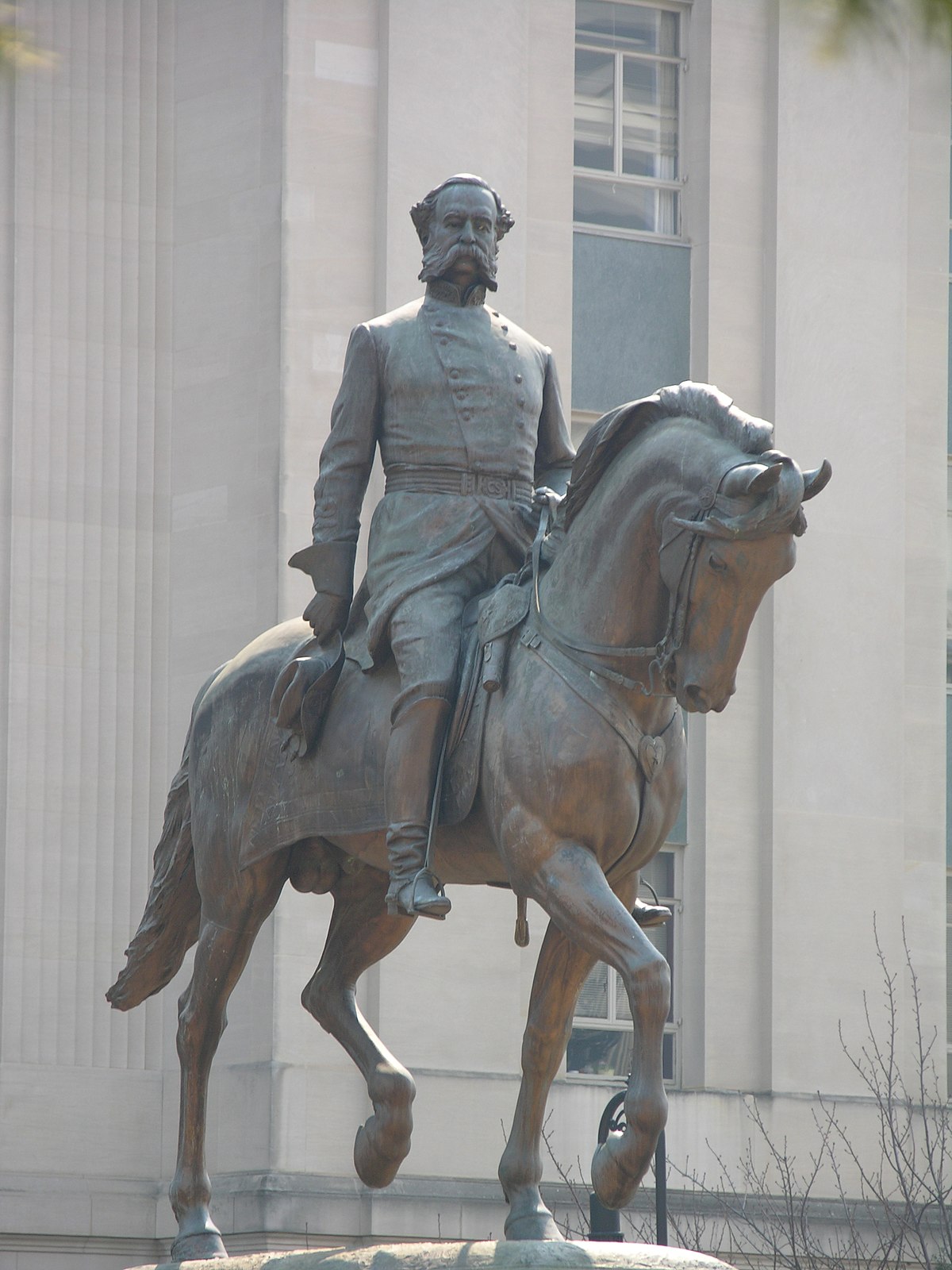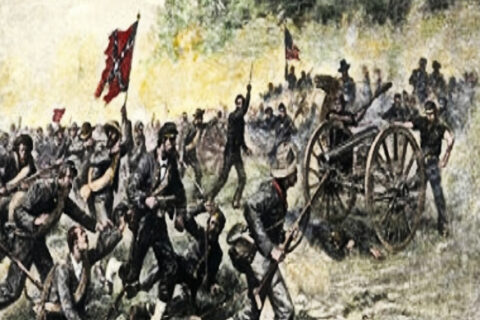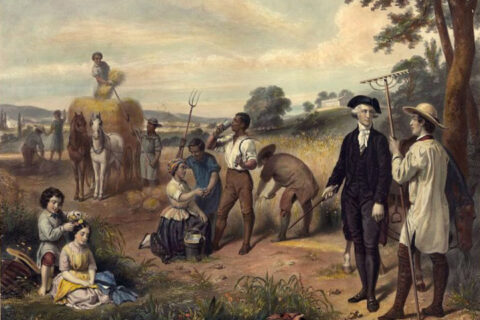The superlative Palmetto State, South Carolina, represented the premier victory of the Union during the War Between the States. Setting an example and playing numerous pivotal roles throughout Southern society since its inception, the state gave birth to the Deep South during the late 1600’s and spearheaded the secessionist movement in 1860 which catalyzed the War, as well as gracing the annals of political philosophy with the wisdom of John Caldwell Calhoun. Being a powerful state full of rich political influence, the Empire sought to utterly crush it during Reconstruction, much like the exceptional cases of Louisiana and Mississippi. This essay will examine and analyze the economic, political, and social history of the Reconstruction Era within the state of South Carolina.
Keeping in tandem with the rest of the the former Confederacy, South Carolina existed in total economic ruin as a result of the War. Standing as the only Southern state which steadfastly fought against the Whiggism of the early and middle 19th century, South Carolina arguably stood to lose the most of any Confederate state economically, with the only possible exception being Mississippi. This being stated, the most odious of financial grievances the state’s populace experienced during Reconstruction manifested a few years following the end of the War Between the States. As a result of the Radical Republican takeover of the state in 1867 and 1868, a multitude of oppressive taxes were implemented, as well as a multitude of extravagant government spending and corrupt monetary schemes. Funding in paper companies and railroads, which never materialized, and ever increasing gratuities for political officials merely scratch the surface of a much deeper corruption. Only white South Carolinians paid these taxes and funded these subterfuges. These masquerades grew so egregious a number of the natives refused to pay taxes and a large tax committee formed to petition then Governor Scott to reduce taxes, and the General Assembly implemented a failed attempt at impeachment due to his government’s noteworthy spending practices. The thievery continued under his successor’s tenure and did not experience any mitigation whatsoever until 1874 when Daniel Chamberlain was elected to governor, albeit facing steadfast opposition from Radicals in the state legislature who ensured the impotence of his tenure.

Politics of the state during this period, of course, did not benefit the South Carolinian people. Though the initial governing of the state after the War maintained the trend with the rest of Dixie in that it lacked the malicious fervor of Radicalism, the situation deteriorated following the passage of the Reconstruction Acts in 1867. Though initially peaceful under James Lawrence Orr, the passage of said legislation forced South Carolina into military administration which deposed Orr and ensured the election of Governor Robert Kingston Scott.
Scott, serving two terms as governor, represented total Radical control of the state and instituted a number actions which only deserve recognition as egregious iniquity. Widespread societal unrest took place under his administration, primarily due to the continued disfranchisement of whites via the 14th Amendment, as well as the Ironclad Oath and the raucous nature of armed black militias. Additionally, Scott utilized the common Radical tactic of the time during his second term of consistently calling on the federal government for an increased transfer of troops to the state. The Kuklux organizations instituted such fear in the legislature and the local black population that Scott at one point willingly made concessions to white citizens of the state, resulting in the dissolution of such groups by May 1871. However, the Grant Administration instituted martial law in nine counties of South Carolina’s Upcountry later during 1871 in order to quell a rebellion which no longer existed.
Franklin Israel Moses Jr. succeeded Scott for a single term. Elected in 1872, Moses presided over an administration similar to the one his predecessor established. Though this period remained relatively unworthy of note, Moses became known for the continuance of extravagant government spending and also his willingness to participate in the vain thievery. Making his fortune from his political offices during Reconstruction, Moses purchased the Preston Mansion and used it to host a number of primarily ethnic parties; additionally, he spent $40,000 in that day’s money on his own personally expenses while serving as governor.
Daniel Henry Chamberlain followed Moses into the governor’s chair in 1874 as a result of even Republicans seeking the mitigation of the monetary scandals during the two previous tenures. Republicans were aware of the disfavor of whites and the constant volatility of that demographic of the time and believed a more moderate candidate would ameliorate the mood of native South Carolinians. Despite his best efforts and encouragement of financial responsibility, Chamberlain failed to rein in the Radical elements which dominated South Carolina’s legislature. Ultimately, his failure to mitigate the insanity which engulfed his party and the gratuitous, abusive nature of his predecessors ultimately cost the Republican Party a future within South Carolina.
Societal development during the time paralleled both Louisiana and Mississippi, being virulent and heinous. The state rapidly descended into rampant chaos early in 1865 following Governor Magrath’s arrest. Additionally, a contingent of black troops terrorized civilians until Johnson’s appointed provisional governor, the former Confederate officer Benjamin Perry, restored order in November 1865. Experiencing a general period of peace from 1865 to 1868 during Presidential Reconstruction, South Carolinians grew weary of their abhorrent situation and the amplification of unremitting Radical rule following the passage of the Reconstruction Acts in 1867. Initially embittered over the ruthless campaign of violence and targeting of civilians at the hands of General Sherman during the War Between the States, South Carolinians naturally held dark hearts for their Yankee conquerors.
During the early years of the era, South Carolinians generally complied with Presidential Reconstruction. President Johnson made it clear he wanted Reconstruction to end as quickly and peacefully as possible. The populace quickly elected James Lawrence Orr, a former Confederate officer, as governor. Electing former Confederates was a political move many other Southern states, including Mississippi and Texas, had carried out.
South Carolinians longed for an end to the corrupt Radical Reconstruction which deposed Johnson’s plans. Experiencing the unmitigated, macabre vicissitudes of Yankee invasion and military rule since 1867 and thrust into a period of hopelessness regarding economic recovery as a result of the Panic of 1873, South Carolinians steeled themselves and resolved to ensure their success in reclaiming the reins of their beautiful state. The Gubernatorial Election of 1876 represented nothing short of a miraculous revolution. The Democratic Party, while totally inactive since the gubernatorial election of 1868, quickly reformed and began a campaign quite similar to the one executed in Mississippi in 1875.
Campaigning on a variety of issues including the Radicals’ superfluous spending, the racial strife, federal military occupation, general incompetence of the regime, and the farcical inversion of the social hierarchy established during the Antebellum period, the Democratic Party nominated former Confederate General Wade Hampton III to run against Daniel Chamberlain in the election. Aided by the Amnesty Act of 1872 and a generation of young South Carolinians able to vote when they beforehand could not, the conservative Democrats stood on equal footing to the Republicans, finally able to pose a resistance. Energized by the campaign and renewed chances of success, acrimonious Southerners enrolled in local gun clubs at a significant rate, and the paramilitary organization known as the Red Shirts formed, taking the moniker of the group which grew to infamy as part of the Mississippi Plan in 1875.

The run-up to the election was mired in violence and controversy. The initial event to start the multitude of civil disturbances during the election also remains the most controversial. The Hamburg Massacre, spurred on by a malignant black militia company in the town of Hamburg, generated mass hysteria in Northern newspapers due to the bloodletting at the hands of the Red Shirts. Additional riots and massacres followed during the election including notable riots in Ellenton and Charleston. The unrest continued to grow with such splenetic fervor that attempts were made to rule gun club membership and the Red Shirt organization an illegal practice; additionally, more troops were moved into the state at the behest of Chamberlain. While the intensity of the campaign manifested on both sides, the passion of conservative Democrats surpassed anything the Republicans could muster, resulting in the famous de facto campaign slogan “Hurrah for Hampton” evincing the determination of said Democrats to win.
Despite the widespread raucousness of the campaign, the election day proper passed largely without incident. However, the outcome produced controversy being that the election remained indecisive. The winner of the election changed with each recount of the votes. While the evidence indicates Hampton’s success, the questionable outcome and possibility of voter fraud, as well as ballot box tampering caused an incident in which Chamberlain refused to concede defeat. Both supposed governor-elects’ party hosted an inauguration ceremony for their candidate. The issue continued into 1877 and surpassed every bureaucratic institution with any authority to decide the winner. Ultimately, the issue went to newly elected President Rutherford B. Hayes who named Hampton the winner in the infamous Compromise of 1877, the final event of Reconstruction and the moment in which the military occupation of Dixie finally came to a close, and South Carolina finally received Redemption. The tenure of Wade Hampton instituted unwavering conservative Democratic control of the state which lasted until 1994. Hampton governed a noteworthy campaign which resulted in a stellar list of succeeding governors over the generations which would include uproarious “Pitchfork” Benjamin Ryan Tillman and the prodigious James Strom Thurmond.
As with Mississippi and Louisiana, South Carolina experienced the worst form of Radical Reconstruction in the former Confederate States. An analysis of the economic, political, and social occurrences of the period reveals a history steeped in bloody struggle and tragedy, as well as profound socio-political significance. The triumph over seemingly insuperable Radical control in 1876 amounted to nothing short of a genuine revolution. Unfortunately, this history continues its descent into obscurity, only resurfacing as a means for communist historiographers to attack the justifiable actions of supposed baleful South Carolinians. Despite faulty inaccuracies touted by leftist institutions, South Carolina produced an honorable society following the Compromise of 1877. However, recent events, demoralizing to contemporary Southern Nationalists, seek to quell any continuation of this proud history, at the expense of a number of stalwart Southerners. Though the future appears grim and doleful, whether or not a reactionary event, akin to the one in 1876, remains to be seen, albeit unlikely.
“The White people of the South are the greatest minority in this nation. They deserve consideration and understanding instead of the persecution of twisted propaganda.” –Strom Thurmond






Excellent piece of writing, sir. I’d offer more but am short on time. Maybe later.
When I read fantastic articles about the tremendous adversity and vicissitudes our great-great-great grandfathers faced and how they overcame them, I have a resolution about how I handle this, and that is I try to see how it pertains to what we can actually do, at this time, in our history, to attain a better result for Dixie.
To that end, I would say this –
#1. We have no significant political institutions or structures with which to address our grievances and shortcomings.
#2. We have no politicians of a stature like Wade Hampton, and, by that, I do not mean that we have not decent people who are well-meaning at our local, state, and national levels of the political structure.
But, what I mean is that we have no leaders, not a single one, who, like Wade Hampton, is prepared to risk his life, his liberty, his well-being, and his reputation to organize and lead us, his fellow Southern Brethren, to our defence.
The situation is, as I have many times said – the government, at all levels, IS so bad, because the quality of people our culture is presently turning out is sheepish, greedy, superficial, cowardly, and selfish.
Great heroes, like General Hampton, do not arise from nowhere – they arise from a living culture, and our culture, from a spiritual standpoint, is in a coma and on life support.
But, in fairness, the culture all over The West is on life support, and we, Southrons, are but one manifestation of that.
We, Western White Gentile Nations and Peoples, are in a historic dilemma, the likes and magnitudes of which are completely unprecendented.
Lastly, and speaking for myself, I have been fighting culturally, politically, and personally, for the last decade to try and help change this circumstance for The South, but, alas, as many others in this movement have undergone, I have not been able to achieve any significant success.
One person may be willing to bear a rifle, but, neither one person nor 10,000, can wage a war for sovereignty, when tens of millions are involved and steadfastly find reasons to evade the responsibility.
In the end, this is where we are, and no matter how well informed we are about The Wars of Reconstruction, we are stuck right here, with tenfold more deficiencies than were our grandfathers who fought through the 1860-70s to a better end.
I am sorry it is so, but so it is.
God bless each one of you on this site and in this organization trying to do y’all’s best for our land…